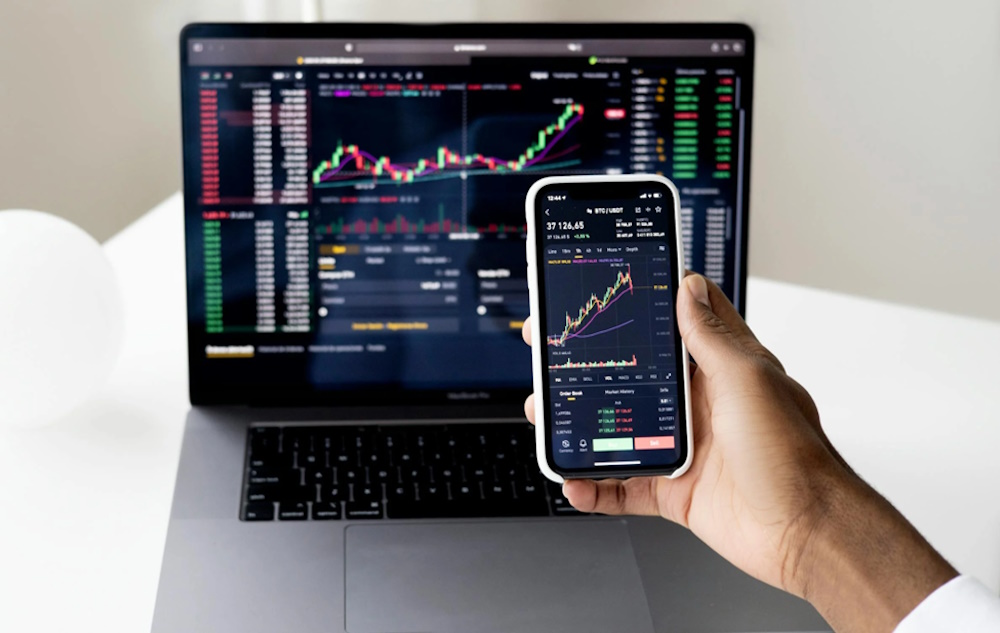
To make this clear, dealing with finances is not a piece of cake, and turning it into a game may not be the smartest method. However, with this article, we decided to uncover another aspect of financial gamification, namely, the landscape itself. It’s not the individuals who necessarily like playing with finances, but the environment offers other means of generating interest in trading, stock market investments, and so on.
Bitcoin Gaming and the New Financial Mindset
Trading platforms use bright visuals and rewards that make investing feel like playing a mobile game. Features like zero-commission trades, fractional shares, and even leaderboards or social feeds have lowered barriers and stoked competition, attracting a new generation of investors. Online communities amplify this effect: the GameStop saga of 2021 saw crowds on Reddit treating the stock market like a coordinated mission, pushing a meme stock to new heights. In short, investing has taken on a play-to-win vibe.
Within this landscape, Bitcoin has found a unique foothold via online games. Many newcomers get their first hands-on experience with cryptocurrency not on an exchange, but through Bitcoin-based games – for example, online poker rooms that use Bitcoin as chips. The appeal is clear: the game (poker) is familiar, the entry stakes can be very low as some btc poker sites let you start with a very small amount of deposit (beginners favor this) and the tech advantages are tangible. Transactions in Bitcoin are fast and low-cost, avoiding the usual bank delays and fees. Players anywhere in the world can join instantly, enjoying faster transactions, improved privacy, easier cross-border access, and lower fees, which give them more control over their gaming (and by extension, financial) experience.
This fun, low-pressure exposure to crypto helps demystify it. When people later step into broader financial arenas (be it investing in index funds or trading currencies) they carry a new comfort with Bitcoin. Having used it in a game, they trust it as a viable asset and tool. In essence, learning by playing builds familiarity that translates into confidence in real markets.
Bitcoin vs Traditional Investments: A New Playing Field
Let’s compare Bitcoin with the traditional benchmarks of wealth (like the S&P 500 stock index, the Dow Jones Industrial Average, and plain old U.S. dollars in the bank) to see how it stacks up. The differences highlight why Bitcoin is capturing attention as a dynamic and central player.
First, consider performance. Bitcoin has been nothing short of extraordinary on this front. Over the past decade, it has massively outperformed equities, making it “the best performing financial asset in history”. While broad stock indices like the S&P 500 or Dow might average on the order of 8–12% annual returns in recent years, Bitcoin’s annualized returns have been in the double or triple digits over the long term. And unlike holding cash (USD) which generally yields minimal interest, Bitcoin isn’t eroded by inflation. In fact, holding cash actually loses value over time; consumer prices are ~23.6% higher now than in early 2020, meaning $1,000 saved then buys only about $810 worth of goods today.
Below is a comparison that highlights some key differences between Bitcoin, stock indexes like the S&P 500/Dow, and holding USD cash
| Aspect | Bitcoin (BTC) | S&P 500 / Dow Jones | USD Cash Savings |
| 5-Year Growth (Annualized) | ~60–100% (outperformed nearly all assets) | ~10% (typical stock market returns) | ~0% nominal |
| Market Availability | 24/7 global trading (no market closing) | ~6.5 hours/weekday (limited trading hours) | 24/7 spending, but transfers can be slow |
| Transparency | Open blockchain ledger (every transaction is public) | Public company reports & regulated markets | Central bank policies, no public ledger of money flows |
| Control & Ownership | Self-custody (hold your own keys, no intermediaries) | Broker/custodian holds assets (so, you rely on intermediaries) | Funds held by banks |
Community and Culture: Bitcoin’s Role in a Gamified Financial World
There’s another crucial factor in Bitcoin’s rise in this gamified financial era: the power of community and culture. Investing has become a social, even viral, activity. Look at social media platforms and forums—finance discourse is everywhere, often infused with memes and a spirit of competition. Bitcoin, born and bred on the internet, thrives in this environment. According to a recent World Economic Forum report, cryptocurrencies (led by Bitcoin) have become a “central investment choice for Millennials and Gen Z”, reflecting a broad generational shift in how young people approach risk and trust.
In fact, many young investors are allocating significant portions of their portfolios to crypto. The WEF found that 62% of Millennials have at least a third of their investments in crypto, and 35% of Gen Z investors have more than half in digital assets. Why such a big bet on Bitcoin and its peers? The same report points to a mix of drivers: technological accessibility, trust in the ethos of blockchain, and the influence of social media and online education.
These drivers include:
- Technological accessibility: Finance apps and crypto platforms are easy to use, global in reach, and often game-like, attracting digitally native investors.
- Trust in blockchain values: Many young investors share a belief in transparency and decentralization.
- Social influence and education: From Reddit forums to fintech TikToks, social networks turn investing into a shared game. Ideas spread fast, and investing feels like participating in a community. For example, the WallStreetBets crowd on Reddit famously banded together to send GameStop’s stock “to the moon” in 2021, a coordinated play that felt like a massive multiplayer game in the stock market. In the growing crypto realm, online communities rally around Bitcoin and other coins with equal fervor, using memes and slogans to build hype and confidence.
